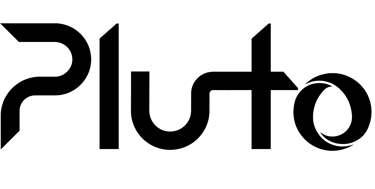Student Loans in 2025: Navigating the New Landscape and Future Changes
The landscape of student loans in the United States has undergone significant transformations, reflecting broader economic shifts, policy changes, and societal attitudes toward higher education financing. With increasing concerns over student debt burdens and the pursuit of equitable access to education, various reforms and innovations are reshaping how students and families approach financing their education.
2/18/20253 min read


The 2025 Landscape: Key Changes in Student Loans
1. Expanded Income-Driven Repayment Plans: One of the most notable shifts has been the expansion and simplification of income-driven repayment (IDR) plans. The Biden administration's efforts to address the student loan crisis have led to the introduction of more accessible IDR options, allowing borrowers to pay a fixed percentage of their discretionary income towards their loans. This progressive approach aims to make repayment more manageable, especially for low and middle-income borrowers.
2. Forgiveness Initiatives: Growing awareness of the burden of student debt has prompted the government to enhance loan forgiveness programs. The Public Service Loan Forgiveness (PSLF) program, in particular, has seen reforms to streamline the application process and expand eligibility. As a result, more borrowers in public service roles are finding relief, reflecting a commitment to valuing essential professions.
3. Focus on Equity: Recognizing the disproportionate impact of student debt on marginalized communities, initiatives aimed at promoting equity in education financing have gained traction. Programs designed to support first-generation college students and those from low-income backgrounds have become more prevalent, with schools and financial institutions offering tailored resources and scholarships.
4. Technological Innovations: The rise of technology in financial services has transformed how students manage their loans. Mobile applications and online platforms now provide borrowers with real-time data on their loans, repayment options, and financial health. These tools empower students to make informed decisions and navigate the complexities of student loans more effectively.
5. Changes in Interest Rates and Terms: In response to economic fluctuations, interest rates on federal student loans have seen adjustments. The introduction of fixed-rate loans has provided borrowers with predictability in their repayment plans. Additionally, some private lenders have adapted to a more competitive market by offering variable-rate options with incentives for early repayment or loyalty programs.
What’s Next: Anticipated Changes in the Coming Years
1. Legislative Reforms: As the conversation around student loans continues, further legislative reforms are expected. Advocates are pushing for comprehensive measures aimed at alleviating student debt, including proposals for broad-based loan forgiveness and adjustments to interest rates. The outcomes of upcoming elections will play a significant role in shaping these policies.
2. Focus on Alternative Funding Models: As concerns over rising tuition costs persist, alternative funding models, such as income share agreements (ISAs), are gaining attention. These agreements allow students to pay for their education through a percentage of their future income, shifting the financial burden away from traditional loans and aiming for a more sustainable approach to higher education funding.
3. Increased Financial Literacy Initiatives: Recognizing that many students enter college without a full understanding of financial management, educational institutions are likely to ramp up financial literacy programs. These initiatives will help students make informed decisions about taking on debt and managing repayment, fostering a culture of financial responsibility.
4. Enhanced Support for Non-Traditional Students: The demographic of college students is evolving, with more non-traditional students returning to education later in life. As a result, loan programs and support services will increasingly cater to the unique needs of adult learners, including flexible repayment options and tailored financial guidance.
5. Sustainability and Social Impact: The intersection of student loans and social responsibility is becoming increasingly important. Institutions and lenders may focus on sustainable practices and social impact investing, aligning education financing with broader goals of equity and environmental responsibility.
Conclusion
As we navigate the world of student loans in 2025, it is clear that significant changes are underway. With a focus on equity, technological advancements, and innovative funding models, the approach to student debt is evolving to meet the needs of a diverse student population. While challenges remain, the ongoing dialogue around student loans indicates a collective commitment to creating a more accessible and equitable higher education system. The future of student loans holds promise, and as reforms continue to unfold, students and families will benefit from a more supportive financing environment.

